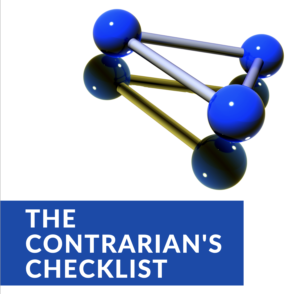
One of the most exhilarating projects I have ever worked on is to act as co-author with James M. Sweeney for our upcoming book: Creative Insecurity: Lean Into The Unknown and Unleash Your Inner Misfit. On December 10, it will be published by Post Hill Press and Distributed by Simon & Schuster.
It is now available for preorder on Amazon or wherever else you buy books.
James M. Sweeney – a master who “failed his way to success”
First, a quick introduction. James M. Sweeney (friends call him Jim) understands the idea failure giving rise to success because he never felt like he fit in corporate life. He came from a healthcare background after serving as an Army medic, and later was successful within large healthcare companies. But since he was 16-years-old working in a hospital supply room, he had always seen systemic problems in hospitals and had a burning desire to fix them.
That led him to propose an innovative idea to his then-employer. They thought it was such a terrible idea that not only did they not want to do it, but they they also fired him for what Jim calls, “coloring outside the lines.”
He was then free to take that idea and do it himself, founding a company called Home Healthcare of America which became Caremark, and which was ultimately acquired by CVS.
After hitting it out of the park with Caremark, he founded several other world-changing companies that have had billion-dollar exits. He is adamant, however, that money is only a scorecard. Earlier this year, he was interviewed in a podcast by a young athlete with ambitions to someday become an entrepreneur. He asked the young man, “Do you want to know how to become wealthy?” The young man nodded intently.
Don’t try to become wealthy
Jim advises people he mentors, “Don’t try to become wealthy. The key is to create value. Do something that people really want and need. If you do that, the money will follow.”
It is a model of success that has followed him for decades. Jim’s companies literally changed the face of healthcare in America, improved life for millions of patients, and subsequently created billions of dollars of value for investors. These companies include Caremark, Inc./Home Health Care of America, CardioNet, Clarify Medical, Coram, CAPS, and more. It is a remarkable feat that none of his companies have failed.
Some of the companies originally founded by James M. Sweeney:

A day in the life with James M. Sweeney
What has it been like working with Jim? Here are some examples.
Although most people would have retired long ago, he doesn’t believe in such nonsense. Instead, he reminds people that he hasn’t worked since he started his first company, because that’s when it stopped feeling like work.
He also jokes that he prefers spending time with younger people because those his own age seem mostly interested in what happened decades ago. Jim is still in love with building the future.
Today, Jim travels the country doing humanitarian work, he regularly mentors entrepreneurs, and is gearing up for the book launch. He is a true professional who respects everyone. When dining out, he always engages the wait staff, asking their names, and shows a genuine interest in them. He cares.
Jim also lights up when sharing about the marvelous sermons and the engaged congregation he found at the Church of St. Clement in El Paso, and about his work with the Stephen Ministries.

Jim is adamant that this book is not about him, it is about helping readers reach their potential. Still, this is my blog, so it is my prerogative to gush a bit about him here.
I have been privileged to read spontaneous thank-you letters sent to him by colleagues who worked with him decades ago, and patients whose lives were saved by technologies he pioneered. One such person I interviewed, Diana Orrantia, could be discharged from the hospital when she had leukemia because of at-home therapies pioneered by Caremark. Later in her life, she received heart monitoring from a CardioNet device. When she met Jim at church this year and learned his background, she got emotional. She said this to him:
“I just want to thank you because you were a huge reason why I was able to smile, why I was able to carry on and not be depressed. I was able to spend time with my family and not become institutionalized in the hospital.”
Diana Orrantia
According to longtime colleague, Larry Watts, “Jim has focused on introducing new technologies and services that answer major unmet medical or patient care needs, not on ‘me too’ products or minor improvements on the status quo. He has spent his life convincing employees, clinicians, patients, investors, clinicians, regulators, and payers to support significant improvements in patient care.”
Coaching startups
Another example of me witnessing Jim at work came when he invited me to sit in on a session where he coached a startup. It was truly a masterclass in helping a small company shape its vision to achieve greatness. He peppered them with hard questions, but regularly paused to give encouragement. “My goal is to ask harder questions than you will get from anyone else, so you will be prepared.” In doing so, he created a mood of safety that I found palpable and thrilling.
In that session, I learned a new term I had never heard before, “premortem.” I thought it was genius.
The idea is for everyone in the room to make a prediction of, “this company failed because…” Then, the person speaking goes on to list one or more potential causes of death. Jim explained to us that the purpose is not so anybody can be smug if it doesn’t work out. Rather, the idea is to be realistic about lurking dangers and to get ahead of them.
He explained that all his companies have had multiple, “near-death experiences” and that he isn’t afraid of failure. Rather, he embraces the idea that you never start out being right. “You can only be first once,” he admonishes the startup team before continuing. “You can be right later. The truth is, you are never right at first, so you figure that out as you go.”
Are you a contrarian?
Today, James M. Sweeney is a man on a mission to find people with tremendous potential who are languishing in bureaucracy and dream-killing environments. He empathizes with those who do not fit where they are, and who can see what needs to change.
Creative Insecurity is for big thinkers with a burning desire to move the needle for themselves and for the world. A contrarian is someone who sees what others do not, who have an uncanny ability to peer over the horizon. They have an indefatigable desire to make the world better and it makes them crazy when others accept the status quo. Contrarians are interested in original ideas that haven’t been done before, ideas that are an order of magnitude better than what exists now.
Here is what Jim says about The Contrarian’s Trifecta:
This book will help you move needle in your life. Everyone can unlock the power of failing your way to success, being insecure about what you don’t know, and embracing the ‘you point of view.’ If you are a big thinker who realizes you are capable of more, I wrote this for you.
James M. Sweeney
To see how he thinks and how this applies to you, get James M. Sweeney’s free “big idea checklist” here:
Why a trifecta?
As we set to work on his book, we quickly identified a list of traits that make contrarians successful. Then, we grouped these traits into three main categories:
- Vision: the ability to see what other people miss and a tireless desire to figure out “what am I missing?”
- Humility: One of Sweeney’s favorite adages is to become comfortable with insecurity. Ask questions, be curious, listen intently, and communicate with what Jim calls the “you point of view.”
- The no-quit gene: There is a certain indefatigability in the way Jim sets about changing the world. Once he lands on a big idea and validates it, he never gives up.

A trifecta is important not only because there are three macro skills that will set a person apart, but because of the natural tension between these skills. In other words, they hold each other in balance. That is why a person needs all three to achieve the highest degrees of success.
A triangle is the strongest geometric shape, and a trifecta will naturally be the strongest of character traits when working together. Another analogy is that without one of these pillars, a three-legged stool will topple.
The good news is that these are not merely inborn traits; they are skills that can be cultivated.
What colleagues say about James M. Sweeney
Imagine my delight to find so many national articles singing his praise from publications such as the New York Times, The Economist, and The Wall Street Journal.
The New York Times called him a “pioneer in his field.” The Wall Street Journal called his initial idea, “visionary” and “disarmingly simple. In a special report on healthcare, The Economist wrote that, “James Sweeney is one of the few entrepreneurs to have achieved commercial success, not once but half a dozen times, with businesses selling personal medical devices.”
His colleagues agree. In many hours of interviews, they have told me stories about his lack of ego, exceptional timing, ability to raise capital, and willingness to be different.
Teri Louden, President of The Louden Network, praised his “telescopic mind in that he can see the big picture but also knows how to focus in on the detail.” Longtime colleague, Larry Watts, described the “mosaic of talents” he assembled where each person contributed in a different way.
What it feels like to be part of the mosaic
I feel unbelievably lucky to be working with Jim on this project because not only do I get to see him in action, but I am also the recipient of his warm encouragement.
Jim believes in having people write their own job descriptions to be uniquely tailored to their strengths, and his goal is to have employees more excited on Monday than they were on Friday night. I find his optimism to be infectious, and I experience this effect every time I get to work on this project with him.
He has this innate predisposition to believe in people, and that is the spirit with which has turned me loose to write drafts. He has encouraged me to add any insights I observe along the way. Seeing and feeling this for myself shows why he has been successful. When people feel their boss believes in them, they will rise to the occasion. My response has been to work hard to do his ideas justice. I have also felt creativity flow freely because I’m not afraid of criticism or failure.
I hope you’ve enjoyed this sneak preview. Watch for more updates and insights as we get closer to launch on December 10, 2024.

Rhonda Lauritzen is a professional biographer with multiple published books and a regular speaker at conferences. She has an MBA from the University of Utah and served as CEO of her family business, working alongside six brothers. Her writing journey began with her parents’ family business saga, and in 2016, she founded Evalogue.Life. Since then, Rhonda has professionally told the stories of families, cities, and nonprofits. She believes that when you tell your story, it changes the ending. Her next book will be distributed by Simon & Schuster December 10, 2024: Creative Insecurity: Lean Into the Unknown and Unleash Your Inner Misfit.
Get Jim’s free Contrarian’s Checklist here:

